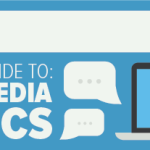The Beginner's Guide to Social Media Metrics: Sentiment

Social media can be an incredibly important tool for your business. But it can also be overwhelming. You’re following what’s being said about your industry and brand, your team is trying to produce and share great content, you’re interacting with customers, finding prospects and you’re trying to make sense of it all. The biggest question you’re most likely trying to answer is if your work in social is helping you achieve real business results. To find out, you need to measure your efforts by tracking the right social media metrics.
Not sure where to start? In this blog series, we’ll break down the social metrics you should be tracking, describe how to measure them, and most importantly, explain how you can use them so you never miss out on important insights.
Yesterday, we kicked off the Beginner’s Guide to Social Media Metrics with mentions. Today, we’ll break down sentiment.
Sentiment
Sentiment refers to the emotion behind a social media mention. It’s a way to measure the tone of the conversation—is the person happy, annoyed, angry? Sentiment adds important context to social conversations. Without it, measurement of mentions alone could be misleading. If you were measuring mentions for your company’s new product, you might assume a surge in mentions meant it was being well received. After all, more mentions = more people talking about the product. But what if all those mentions were negative?
Measuring sentiment will help you understand the overall feeling surrounding a particular subject, enabling you to create a broader and more complete picture of the social conversations that matter to you.
How to Measure Sentiment:
Measuring sentiment on your own can be quite a time commitment, depending on the size of the conversation. To record the sentiment of mentions, you would read each one, evaluate the tone and assign a score such as positive, negative or neutral.
There are a few free tools available that track and measure sentiment and quality social media marketing platforms will provide automatic sentiment analysis. The uberVU via HootSuite platform uses a powerful automation tool to determine sentiment, which is based on machine learning technology. If a person was to tweet about their experience shopping at Sears, the sentiment would be determined based on the description words they use. “Such great deals at Sears!” would register as positive whereas “Customer service at Sears is the worst.” would register as negative.
How to Use Sentiment:
Evaluate Brand Health
Analyzing sentiment on a regular basis will help you understand people’s feelings towards your brand, company or your product or service.Consider using a tool that provides automatic sentiment analysis to get a quick overview of your brand health without having to dive into each individual mention.
Head Off a Crisis
Watch your sentiment level for any signals that could indicate a dramatic shift in brand health.A sudden spike in negative mentions could be an indication of a developing crisis. Loop in your PR department, dive into the mentions to find the cause, and establish a plan for handling the rise in negativity.
Competitive Research
Sentiment analysis can also be used to find how your brand or product is being perceived in comparison to your top competitors.Keep an eye on the overall sentiment level of competitors and find opportunities (positive and negative) that you can use to shape your positioning against theirs.
Evaluate Campaigns and Other Initiatives
Use sentiment levels to measure the success of product launches, marketing campaigns or other new initiatives.Track how levels change throughout the duration of the initiative to establish if it is being received positively or negatively. Consider adjusting your strategy if negativity rises.Did your increased sentiment level remain post campaign? Use the sentiment research to inform and perfect future initiatives.
Kate Dunham is a Content Marketing Specialist at uberVU, a platform that delivers real-time marketing insights powered by social media data. She has experience in social media management and editorial, having written for Brides.com and ELLE.com. She has a BS in Advertising from the University of Florida (Go Gators!) and… View full profile
This article originally appeared on The uberVU Blog and has been republished with permission.
Find out how to syndicate your content with Business 2 Community.
Related White Papers
5 Best Practices for Achieving Social Media ROI6 Best Practices for Creating a Content Marketing Strategy5 Step Guide to Social Media Security
Read original article –
The Beginner's Guide to Social Media Metrics: Sentiment

